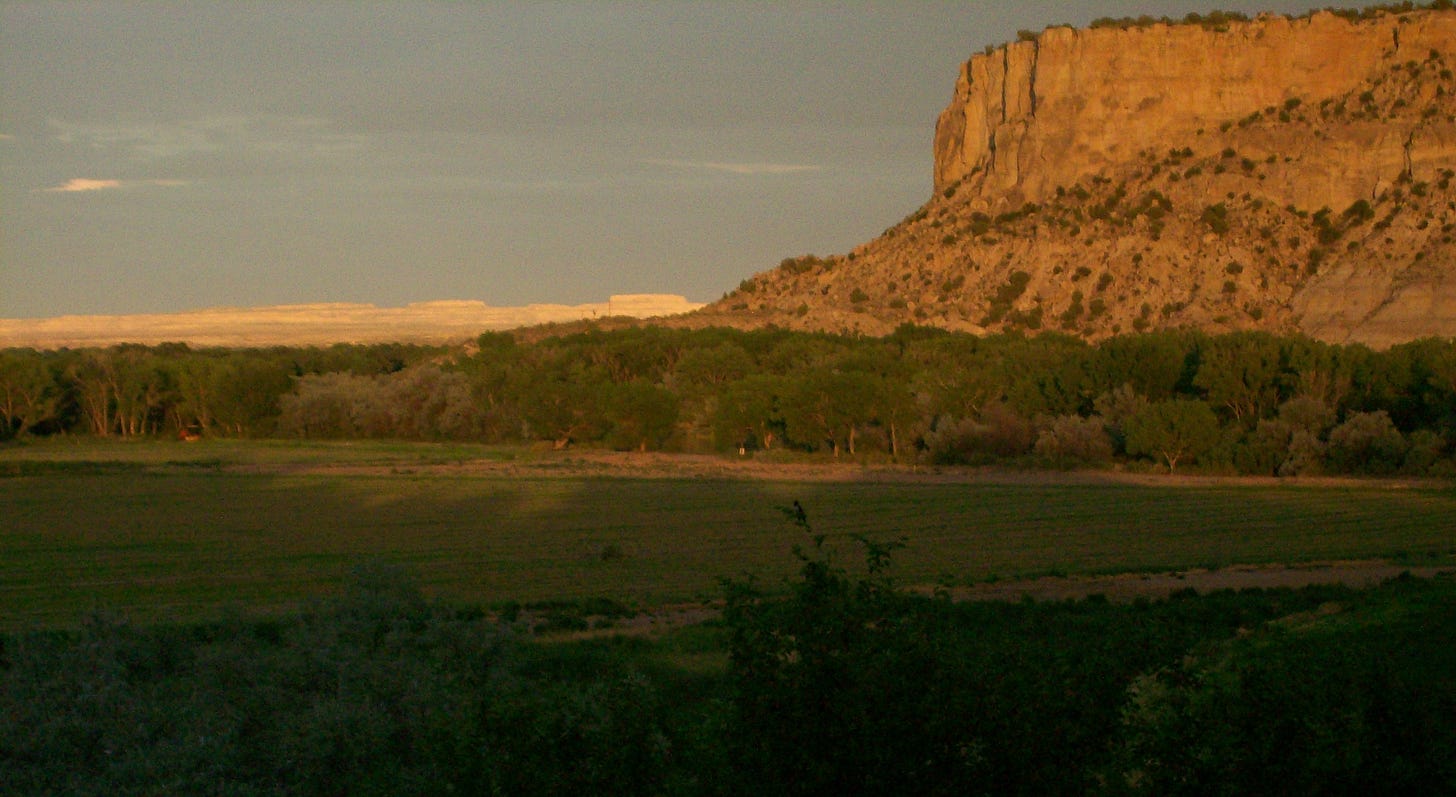
Farmington, New Mexico
At its best, Farmington, NM, is a city of parks, a river walk, an arts community, and small college with caring faculty. It’s also known as the setting for Gary Snyder’s 1974 poem, I Went into the Maverick Bar and a history of racism and civil rights violations. The local economy, strong in tourism and retail, is driven and sustained by controversial extractive industries (coal, oil, & natural gas; and, to a lesser degree, mining & quarrying).
For nine years, I worked for San Juan College, first, teaching in the English Department and then managing a project for School of Energy before moving back to Albuquerque in 2011. During that time, I wrote poetry and was a featured reader at local open mic events. One of the last events before I left town was a poetry reading with two colleagues, Denise Hinson and Kimberly Williams. We called it the “Last Chance and Nothing Left to Lose” Poetry Reading. Several poems from that year are collected in my first book of poetry, When East Was North (2012).
Given that history, I’ve been invited to participate in the Four Corners Author Fair to be hosted by the Farmington Public Library on November 11, 2023. The poem below, “Casita Amarilla” (Little Yellow House), first appeared in When East Was North. I’ve revised and reprised it here because no poem is ever finished and all poems like to find new homes.
Casita Amarilla
Listen to Andi read the poem (unedited in a single take)
Casita Amarilla After buying my house in Farmington, New Mexico, I write a letter to a friend in North Carolina to share the news. He lives in a white, two-story, forever home and reads mail delivered by a postal carrier who crosses emerald green lawns on lily-lined walkways, who smiles at toddlers on tricycles and Labradors on leashes. My little yellow house, I begin, sits at the southern edge of town terraced above a flat expanse of river-valley ranch land. From the apricot tree, gem of the overgrown backyard, I look across alfalfa fields, below, and past the distant cottonwoods gracing the banks of the San Juan to the bluffs— a series of sandstone mesas and canyons of rock art, fossil remains, ruins of ancient stone and adobe dwellings, and crumbling hogans. In sunlit afternoons between spring and autumn equinoxes, a phallic shadow rises on the cliff face, companion to a rock spire we've named Kokopelli. Crenelated Harris Mesa serrates the far horizon— silohuette at sunrise, golden glow at sunset. Canada geese traverse the valley in loud Vs frightening wild turkeys into gobbling frenzy. The neighborhood red tail hawk bursts forth from atop the closest cottonwood, screaming after her prey or soaring, silent, on a thermal. I sit in the dark, squint at the Pleiades, and inhale arid stillness. Coyotes sing to the waning moon. This is my house, my life. With love. I envy your description, he replies. Here, neighbors brag about yards and pools, public schools, square footage, and stainless steel appliances. But in the west, the landscape is your home—the house, simply an excuse.
“Place. A view onto something. A physical view: the physical equivalent
of having a future.”
~Sarah Fay, You Find a Place, from Cured
P.S. I dedicate this post to poets and writers on Maui, and elsewhere, who have recently lost their homes in natural and man-made disasters.




Makes me miss NM!!!!
Hi Andi, I got behind in responding to your posts, I've read and listened to your recent ones. I especially enjoyed reading and comparing your revision of "Casita Amarilla" to the earlier version in your book, "When East was North." It's great to feel how thoughts and words evolve. The audio is fine. I slow down and always hear a word or line that I missed when I read it to myself. Thanks for sharing. --Mary